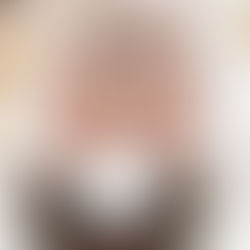A La Ronde - Paper cuts & embroidery
- Stephanie Smart HoEP
- Nov 28, 2018
- 3 min read
Updated: Feb 25, 2024
Rolledpaper work, filigree work, or as it is now known, quilling, was a popular pastime for accomplished young ladies in the late 18th/early 19th centuries. The first known forms of this type of decoration, which is made by decorating items with many, many rolled and pinched or crimped pieces of paper, set in pleasing patterns, date from the 15th and 16th centuries. Predominantly using gold and silver covered paper, filigree work was then used to decorate items with religious significance- pictures of saints etc.- however, shortly after the Reformation in England,when “idolatrous” objects were discouraged, the practice died out. In the mid 17th century the art was revised in England ,and was often used in conjunction with stump work embroidery to decorate mirrors and caskets. In the 18th century it became a popular pastime for young ladies." - https://austenonly.com/category/paper-filigree-work/
I was in Devon recently and whilst there I visited the National Trust property A La Ronde. It is a unique building. 16 sided it was designed specifically to meet their every creative and human need, by 2 cousins Jane and Mary Parminter in 1796. It's unique of course simply because it was designed/created, inside and out, by two 18th century women but also because of its relationship with light. Every room, one by one, is illuminated by the sun's daily passage; all its inhabitants would need to have done, therefore, in order to be working in the most advantageous conditions during each part of the day, was to move themselves and the art/craft project they were engaged in from room to room to room. So clever, and indeed so necessary at a time when domestic lighting was primitive, glasses were only just becoming commonplace and damaging your eyesight whilst engaged in detailed work was therefore a real possibility.
And what detailed craft work they did. There's a freeze made of feathers around the top of the walls in one room, they created beautiful curtain pelmets and were of course also fully engaged in the more usual feminine skills of the time such as embroidery. That said even their embroidery is unique for its areas in relief. The first piece I spotted stopped me in my tracks simply for the way it seems to mimic working with embroidered paper (rather than cloth). But perhaps my work with paper is looking to mimic this effect, I just didn't know it because I hadn't seen it yet.


Several pieces like this next one were created through a mix of stitch, paper, fabric and other materials, apparently possibly including moss!

Then I saw the cousins' paper cuts and was truly astounded. Though this piece was hung too high for me to take a clear photograph it was the brilliance of the background against the beige paper cut that first atracted me.

Then, as I'd done whilst viewing the British museum's collection of Mary Delaney's botanical paper cuts (see earlier blog post) I started wondering about the tools they would have had available. It's a natural question of course, I use a scalpel and can buy as many fresh blades as I need in order to always have a sharp point and edge available but what, I wondered, would women of that time really have had to use?

And in the same room I found, at least part of, the answer. A minute pair of scissors:

please click right to continue reading





























